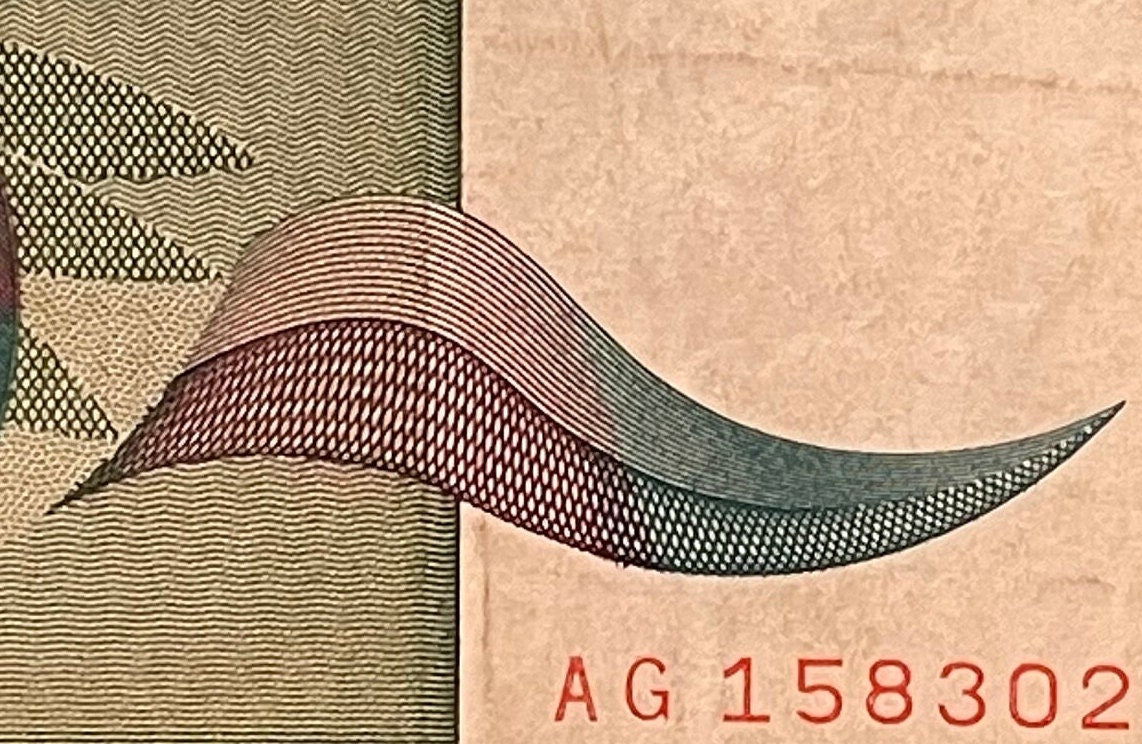elemintalshop
Roses & Boy 50,000 Dinara Yugoslavia Authentic Banknote Money for Jewelry and Craft Making (1992) (CONDITION: VERY FINE)
Roses & Boy 50,000 Dinara Yugoslavia Authentic Banknote Money for Jewelry and Craft Making (1992) (CONDITION: VERY FINE)
Couldn't load pickup availability
Roses & Boy 50,000 Dinara Yugoslavia Authentic Banknote Money for Jewelry and Craft Making (1992)
CONDITION: VERY FINE
Reverse: Roses
Lettering: 50 000 Dinara
Obverse: Boy, at left. National bank monogram at center. Colors: Purple, olive-green, and deep blue-green.
Lettering: 50 000 Dinara
Watermark: Boy
Features
Issuer Yugoslavia
Period Federal Republic of Yugoslavia (1992-2003)
Type Standard banknote
Year 1992
Value 50 000 Dinara (50 000 YUR)
Currency Reformed dinar (1992-1993)
Composition Paper
Size 147 × 70 mm
Shape Rectangular
Demonetized 10 January 1993
Number N# 204360
References P# 117
Wikipedia:
The long cultural history of the rose has led to it being used often as a symbol. In ancient Greece, the rose was closely associated with the goddess Aphrodite. In the Iliad, Aphrodite protects the body of Hector using the "immortal oil of the rose" and the archaic Greek lyric poet Ibycus praises a beautiful youth saying that Aphrodite nursed him "among rose blossoms". The second-century AD Greek travel writer Pausanias associates the rose with the story of Adonis and states that the rose is red because Aphrodite wounded herself on one of its thorns and stained the flower red with her blood. Book Eleven of the ancient Roman novel The Golden Ass by Apuleius contains a scene in which the goddess Isis, who is identified with Venus, instructs the main character, Lucius, who has been transformed into a donkey, to eat rose petals from a crown of roses worn by a priest as part of a religious procession in order to regain his humanity.
Following the Christianization of the Roman Empire, the rose became identified with the Virgin Mary. The colour of the rose and the number of roses received has symbolic representation. The rose symbol eventually led to the creation of the rosary and other devotional prayers in Christianity.
Ever since the 1400s, the Franciscans have had a Crown Rosary of the Seven Joys of the Blessed Virgin Mary. In the 1400s and 1500s, the Carthusians promoted the idea of sacred mysteries associated with the rose symbol and rose gardens. Albrecht Dürer's painting The Feast of the Rosary (1506) depicts the Virgin Mary distributing garlands of roses to her worshippers.
Roses are a favored subject in art and appear in portraits, illustrations, on stamps, as ornaments or as architectural elements. The Luxembourg-born Belgian artist and botanist Pierre-Joseph Redouté is known for his detailed watercolours of flowers, particularly roses.
Henri Fantin-Latour was also a prolific painter of still life, particularly flowers including roses. The rose 'Fantin-Latour' was named after the artist.
Other impressionists including Claude Monet, Paul Cézanne and Pierre-Auguste Renoir have paintings of roses among their works. In the 19th century, for example, artists associated the city of Trieste with a certain rare white rose, and this rose developed as the city's symbol. It was not until 2021 that the rose, which was believed to be extinct, was rediscovered there.
Share










Very good quality! Happy to have this in my collection now!
5 stars review from Catherine









